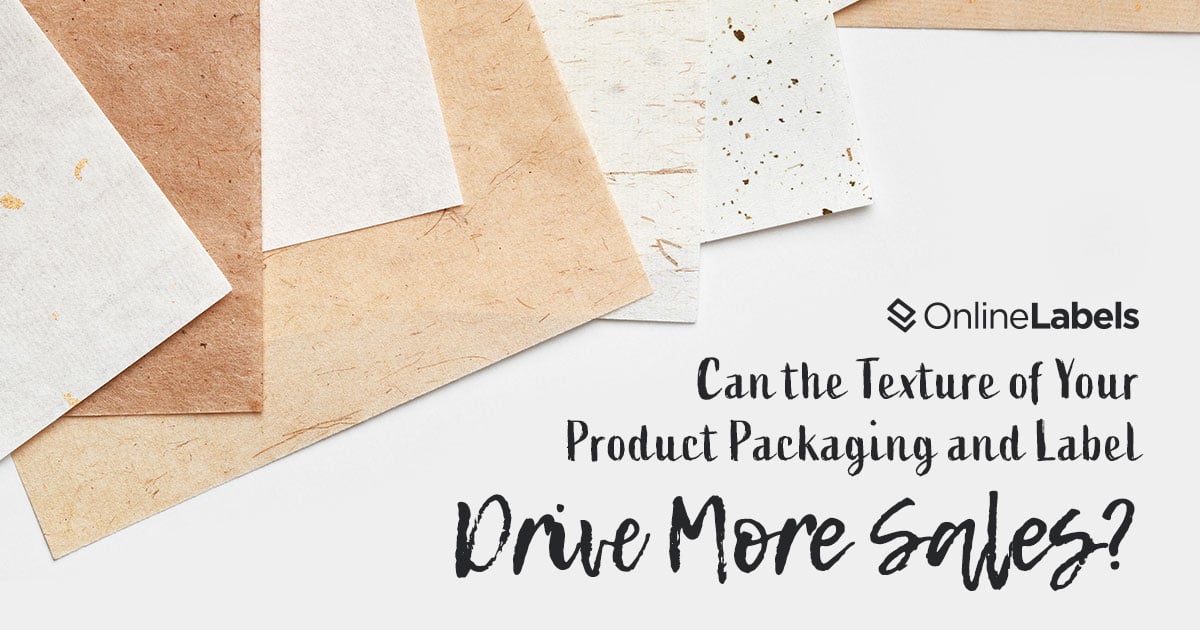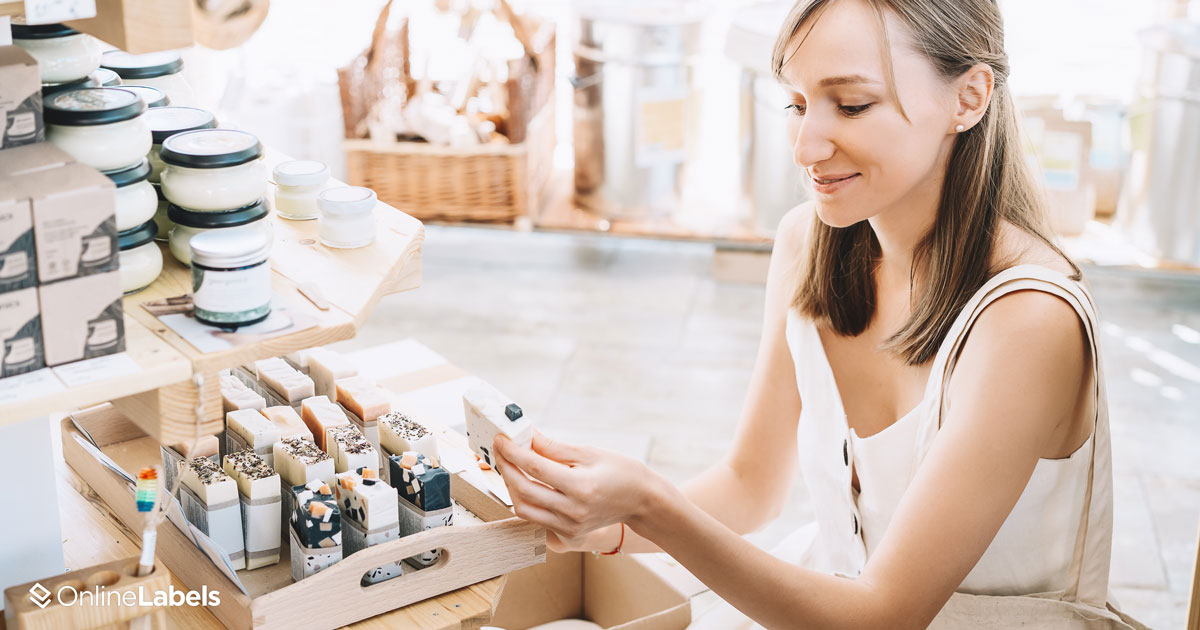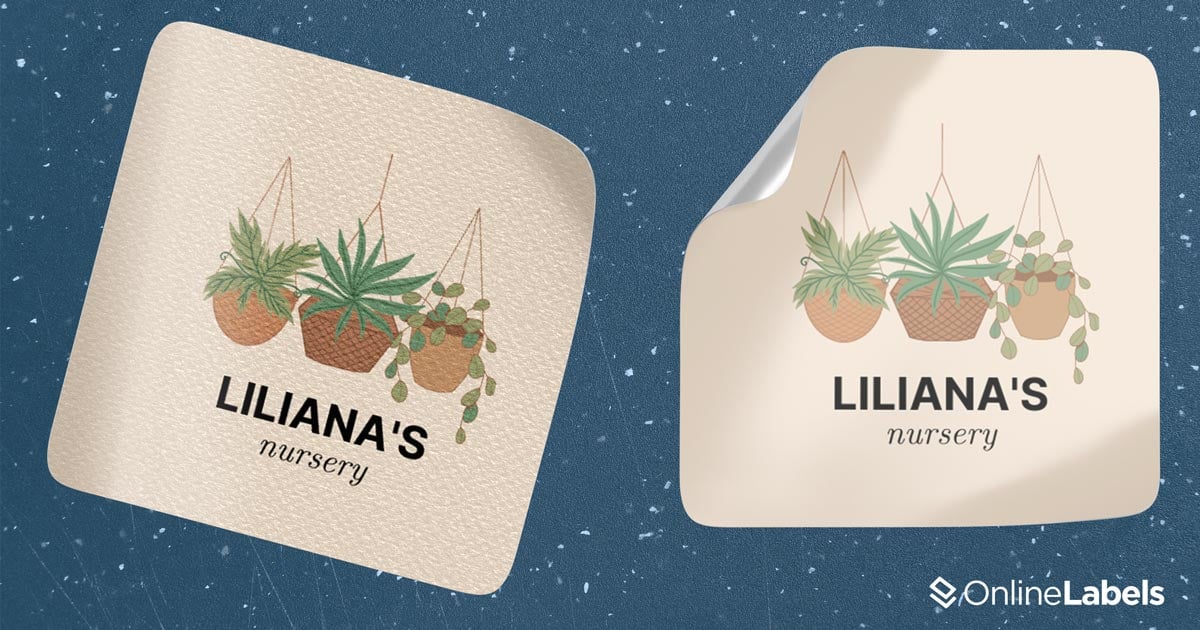Can the Texture of Your Product Packaging and Label Drive More Sales?

Packaging design may be more important than you think — it actually plays a crucial role in influencing the purchasing decisions of consumers. Believe it or not, the attractiveness of packaging can sway consumers to purchase the product, even if they hadn’t planned to initially.
There have been countless studies done that prove the powerful influence that package design, and more specifically, package texture, has. In this article, we’ll break down some of these findings and discuss consumer behavior when it comes to the texture of product packages.
The Power of Attractive Packaging and Impulsive Buying Tendencies
We’ve all made a purchase, whether large or small, on an impulse before. Why are we prone to doing this? In part, it could be because the packaging design subconsciously appeals to us and convinces us we need the product.
A study on impulsive buying tendencies revealed that attractive packaging triggers more intensive activity changes in brain regions associated with impulsive decision-making. The study also found that attractive packaging activates brain regions associated with reward, while unattractive packaging activates regions associated with negative emotions.
Based on these findings, it’s important to concern yourself with what is most visually appealing to consumers during your design or redesign process. Shoppers care about attractive packaging, whether they even realize it or not! Make sure your products activate the right brain region in consumers.
The Role of Touch in Consumer Decision-Making
After you’ve locked in the attention of shoppers, you can keep their attention with the use of texture and physical touch. Touch has a profound impact on consumer behavior. According to this Harvard Business Review article, "Physically holding products can create a sense of psychological ownership, driving must-have purchase decisions." So, making sure your product looks enticing enough that people want to pick it up is essential.
The sense of ownership is a powerful thing! According to this study, physically holding or touching a product is proven to be associated with higher rates of purchase. Once a shopper picks up your product, if they have a pleasant tactile experience, they’re more likely to choose your product.

And while touch is only the second most important sense behind vision when it comes to purchase decisions, one study finds that after one month of use, touch becomes more important than vision and creates a longer-lasting positive product experience. Take cosmetic products, for example. They’re frequently grabbed and applied, but not necessarily visually examined every time they’re used. It’s the texture of the product that shines and continues to provide a satisfying experience overtime.
So, satisfying texture is the gift that keeps on giving!
Leveraging Packaging Textures for Positive Product Experiences
Packaging textures play a crucial role in shaping consumer perception and emotional associations with a product. A study, Three Levels of Product Emotion, found that evaluating the texture of a product through touch can provide a sense of pleasure and comfort to the consumer. If your product package feels unpleasant to touch, the consumer is likely to put your product back on the shelf.
Several other studies have confirmed that consumers most often assess the quality of a product by touching it. For example, top-coats provide an extra weight, thickness, and pleasant texture that communicate higher quality. And rough, unfinished textures tend to be perceived as lower quality. Think about it — we generally don’t prefer flimsy over sturdy, or unfinished over polished. That’s because certain qualities communicate reliability and luxury which naturally attract us.
Pleasant vs Unpleasant Textures
Sometimes, the visual design of your product package will be enough to make consumers want to pick it up and inspect further. But oftentimes, to get consumers to that "touch" stage, your product needs to appear pleasant to touch.
Some textures are evidently more popular than others. Smooth textures are generally preferred over rough ones, and soft and fluffy textures are preferred over hard and rigid ones. Would you rather your favorite lotion bottle be wrapped with a smooth matte label, or one made out of sandpaper? I think we know the answer!

In one study on textures and aesthetic preferences for tactile stimuli, a group was presented with different materials. Results showed that people strongly prefer soft cotton and smooth satin textures over rough sandpaper and abrasive sponge. Cling film, polyester, and tinfoil were also viewed as pleasant to touch, proving that unique textures can be desirable so long as they feel smooth.
At OnlineLabels, we carry a number of pleasant textures that communicate high-quality and create a pleasant tactile experience for shoppers. Some of our favorites are:
- High Gloss
- Matte
- Soft Touch (velvet)
- Leather
- Linen
- Wine/Estate Paper
- Kraft Paper
- Create your own custom texture using embossing or tactile spot UV coating
Other research concludes that consumers also prefer products that use varied materials. At OnlineLabels, we offer Spot UV, which allows you to use two or more different finishes on your label by using liquid UV topcoats. This creates varied textures on the same base material. For example, using a high-gloss topcoat on lettering, and a smooth matte finish on the rest of the label.
So, what’s the takeaway? If it makes sense for your brand, finishing your product with a sleek high-gloss or smooth matte topcoat creates a pleasant tactile experience, and communicates higher quality. This can potentially increase the chances of consumers purchasing your product. Other research-backed approaches are to utilize materials that provide a unique texture, or use a strategic combination of materials and textures.
Overcoming Tactile Design Challenges in Online Retail
In an era dominated by online shopping, tactile design faces challenges. However, innovative solutions have been developed to overcome these obstacles. Augmented reality (AR) has shown promise in satisfying consumers’ need for touch by providing immersive virtual experiences. Research indicates that AR can positively impact store and product attitudes as well as purchase intentions, and satisfy consumers’ need for touch.
Packaging design has a profound influence on consumer behavior. By leveraging attractive packaging and pleasant tactile experiences, businesses can impact consumer decision-making and drive impulsive purchases.
Ready to begin your label order and start positively influencing consumers? Visit our premium labels page and speak with a rep today.


